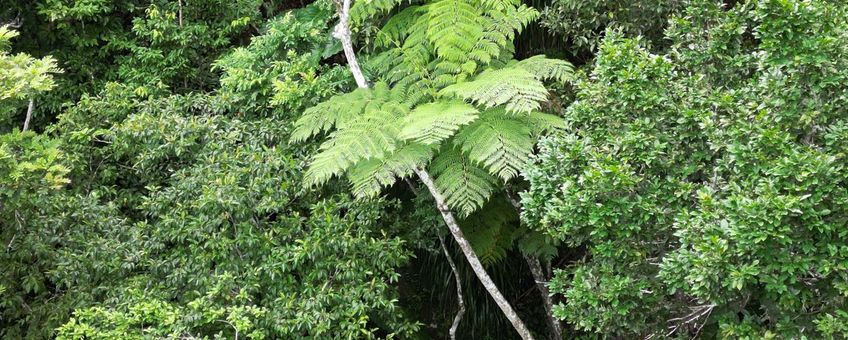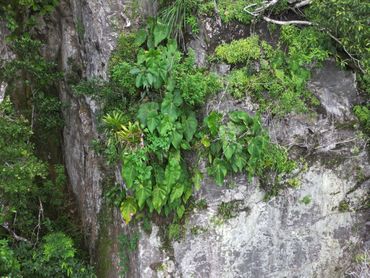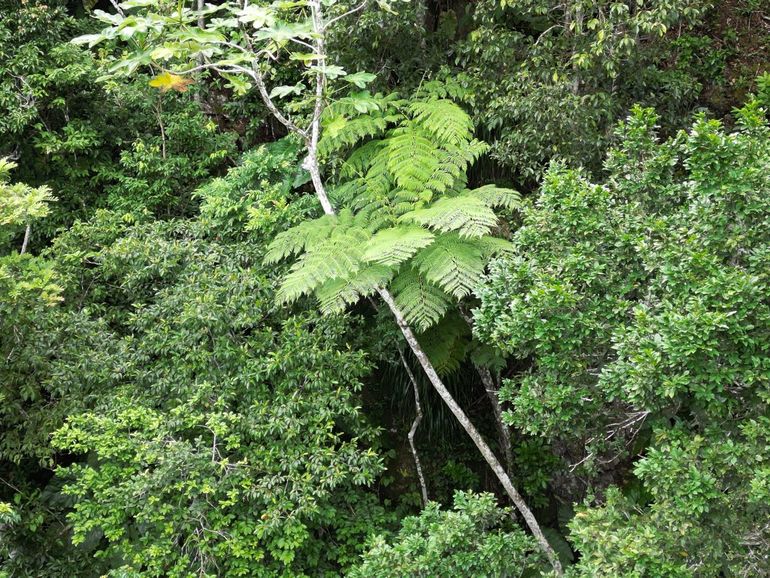
West Indian Tree Fern rediscovered on Statia after 138 years
Dutch Caribbean Nature Alliance (DCNA), STENAPA, Wageningen University & ResearchJohn Janssen and André van Proosdij from Wageningen University and Research worked in close cooperation with STENAPA during this and previous visits to Statia. The field work is part of a long running study of the flora and vegetation of the Dutch Caribbean islands.
Research work carried out earlier this month aimed to survey the steep inner slopes of the Quill Volcano. Little is known on the species that live there as the steep slopes are largely inaccessible. By using remote techniques – such as aerial photos, binoculars and high resolution images – the researchers tried to identify the plant species growing on the slopes and describe the vegetation.
Spectacular discovery
By far the most spectacular discovery were five individuals of West Indian Tree Fern (Cyathea arborea). Tree ferns originate from the Carboniferous era, a geological period dating back 360-300 million years ago. They can grow up to ten metres in height and have two metre long leaves. They do not have a real trunk, as ferns are not woody plants, but the stem is formed by tightly packed roots. This species was first recorded for Statia in 1885 but was never seen again.
The five newly discovered tree ferns were found growing on the lower part of steep, north-facing slopes, where the microclimate is cool and moist. For 138 years, this ancient plant species survived, in places truly inaccessible for humans and not visible from the main viewpoints. The presence of these rare tree ferns illustrates the high biodiversity in the Quill National Park and the importance of safeguarding the natural vegetation.
Studying the flora and vegetation

About the results, Janssen and Van Proosdij state: “This discovery points out that on these most inaccessible steep slopes and the crater rim, more rare and critically endangered species are yet to be discovered.” STENAPA and the WUR researchers intend to continue the exploration of these areas.
Text: John Janssen and André van Proosdij, Wageningen Universiteit en Research, STENAPA and DCNA
Photos: John Janssen

